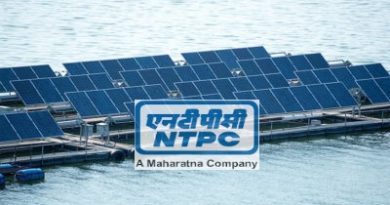Draft Changes in the Electricity Act (2003). Renewables get a big push
 Towards a Smarter Grid
Towards a Smarter Grid
The changes proposed in the Electricity act (2003) have just been released earlier this week, in the form of the Draft Electricity Act (2018). The new draft is an effort to adapt with the new realities of the power sector, besides the governments own stated commitments and consumer expectations now. Thus,it seeks to balance the push for renewables with a more accountable discom, faster resolution of disputes between generators, suppliers and distributors, besides a push to more competition among discoms.
Right upfront, the focus on renewables is apparent. Readers will be aware that the Renewable Purchase Obligation (RPO) is one of the biggest implicit subsidies for the renewable sector, in that it mandates a minimum renewable share in the total energy mix for each discom. While a useful rule so far, the problem with the RPO was the lack of enforcement, when discoms missed their targets. The proposed changes include, among others, a fine ranging between Rs 1 to Rs 5 per unit for discoms if they miss their RPO targets. This will be of greatest benefit to the solar sector, with solar itself getting a separate and prime billing in the proposed RPO obligations. Generating firms using fossil fuels (read Coal or lignite) will also have Renewable Generation Obligations (RGO) to help discoms source renewable energy more easily. Again backed with the threat of heavy fines.
A second move is to make defaults on PPA punishable with heavy fines, seeking to remove a major source of worry for developers. And add a level of transparency and predictability to the business. Disputes are to be settled by a special commission set up, that will need to resolve them in a maximum of 90 days. Penalties may extend to ₹1 crore per day and may also attract suspension and cancellation of a licence.
The draft has also proposed that cross-subsidies within a distribution area shall not exceed 20 per cent and shall be progressively reduced and eliminated in three years.
Also, the reduction in cross subsidy shall be not less than 6 per cent a year.
Proposing changes to Section 25 of the Act, the draft talks about having three levels of committees to facilitate efficient, economical and integrated transmission and supply of electricity.
A major demand, to separate the infrastructure builder for power distribution to consumers and the licensee to supply has been introduced in the Act. This equals to more than one electricity supplier in all areas giving consumers a choice of electricity supplier. Allied to it is introduction of time of the day tariff – power rate as per the energy source, season, time and demand. Smart meters and prepaid meters have also been mandated, with separate timelines to roll them out.
Interestingly, the proposed changes are yet to consider the impact of renewables on thermal plants, which could be forced to even back down in some cases, to allow discoms to meet their renewable obligations. This will make their already poor financial condition worse. Already, plant load factors for national leader NTPC have been trending down on its thermal plants. It is quite clear that what is needed is solving the pricing puzzle of high cost power, so that demand can step up to take up the slack. Whether the government does that using subsidies, rationalising taxation or by forcing consolidation , time will tell.




